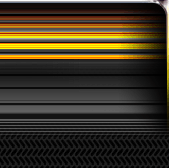



|

|

|
||||
|
Welcome to the GoFuckYourself.com - Adult Webmaster Forum forums. You are currently viewing our boards as a guest which gives you limited access to view most discussions and access our other features. By joining our free community you will have access to post topics, communicate privately with other members (PM), respond to polls, upload content and access many other special features. Registration is fast, simple and absolutely free so please, join our community today! If you have any problems with the registration process or your account login, please contact us. |

 |
|
|||||||
| Discuss what's fucking going on, and which programs are best and worst. One-time "program" announcements from "established" webmasters are allowed. |
|
|
Thread Tools |
|
|
#1 |
|
Registered User
Join Date: May 2001
Posts: 54
|
How to make a boot disk in win2k?
Anyone know?
|
|
|

|
|
|
#2 |
|
There can be only one
Industry Role:
Join Date: Aug 2001
Location: Somewhere else
Posts: 39,075
|
To create setup disks
Insert a blank, formatted, 3.5-inch, 1.44-MB disk into the floppy disk drive. Insert the Windows 2000 CD-ROM into the CD-ROM drive. Click Start, and then click Run. In the Open box, type d:\bootdisk\makeboot a: (where d: is the drive letter assigned to your CD-ROM drive), and then click OK. Follow the screen prompts. Important You will need four blank, formatted, 3.5-inch, 1.44-MB floppy disks. Label them Setup Disk One, Setup Disk Two, Setup Disk Three, and Setup Disk Four. Note You can create the setup disks from a computer running any version of Windows or MS-DOS. |
|
|

|
|
|
#3 |
|
Confirmed User
Join Date: Feb 2001
Location: PB4L HQ
Posts: 1,737
|
That question is pounded into your fucking head a million times on the way to the MCSE 2000...
------------------  Pornshare TGP - Webmasters submit here. |
|
|

|
|
|
#4 |
|
There can be only one
Industry Role:
Join Date: Aug 2001
Location: Somewhere else
Posts: 39,075
|
format c:
|
|
|

|
|
|
#5 |
|
Confirmed User
Join Date: Aug 2001
Location: NeverNever Land
Posts: 291
|
How To Guard Against Boot Failure With a Windows Boot Disk (Q101668)
-------------------------------------------------------------------------------- The information in this article applies to: Microsoft Windows XP Home Edition Microsoft Windows XP Professional Microsoft Windows 2000 , Professional Microsoft Windows 2000 , Server Microsoft Windows 2000 , Advanced Server Microsoft Windows NT Workstation versions 3.1 , 3.5 , 3.51 , 4.0 Microsoft Windows NT Advanced Server Microsoft Windows NT Server versions 3.5 , 3.51 , 4.0 -------------------------------------------------------------------------------- When Windows is installed on a computer that has an Intel x86-based processor and the boot record for the active partition or files required to boot Windows becomes corrupted, it is not possible to boot Windows or any other operating system on that computer. To guard against this situation, create a Windows boot disk when you install Windows on the computer. This disk is different from an MS-DOS boot disk because the entire Windows operating system cannot fit on one disk as MS-DOS can. A Windows boot disk contains the files necessary to start the operating system with the remainder of the Windows system files installed on the hard disk drive. Use the following procedure to create this disk. Place a blank floppy disk in drive A and format the disk using Windows NT or later. From the root folder of the system partition of your hard disk drive (for example, C:\-), copy the following files to the floppy disk: Boot.ini, NTLDR, and Ntdetect.com. NOTE : You may have to remove the hidden, system, and read-only attributes from the files. Restore the hidden, system, and read-only attributes to the files on your hard disk. If either the Bootsect.dos or the Ntbootdd.sys file resides in the system partition, perform steps 2 through 4 above to copy these files to the boot disk as well. If you format a floppy disk in Windows NT or later, the boot record points to the NTLDR file. When NTLDR runs, it loads the available operating system selections from the Boot.ini file. If the user selects Windows, NTLDR runs Ntdetect.com, and then passes control to Osloader.exe. If the user chooses MS-DOS or OS/2, NTLDR loads Bootsect.dos. |
|
|

|